I grew up surrounded by the Wabanaki-Acadian forest. My brother and I climbed tall maples and found hideaways under the boughs of spruce and balsam fir. I couldn’t name the trees, wildflowers, or mosses that decorated the forest floor, but I felt at home under the forest canopy. After some time away, I’m back exploring and recreating in this beautiful ecoregion. This post shares some of what I’ve learned.
Wabanaki/Acadian Forest
The Wabanaki-Acadian forest covers Canada’s maritime provinces (Nova Scotia, New Brunswick, and Prince Edward Island) stretching down to the northeastern United States (Maine, Vermont, New Hampshire, and New York). It’s located between the northern hardwood forest and the boreal forest and contains a mix of trees from both of those ecosystems.1 The region is known for its warm, humid summers and cold winters.3
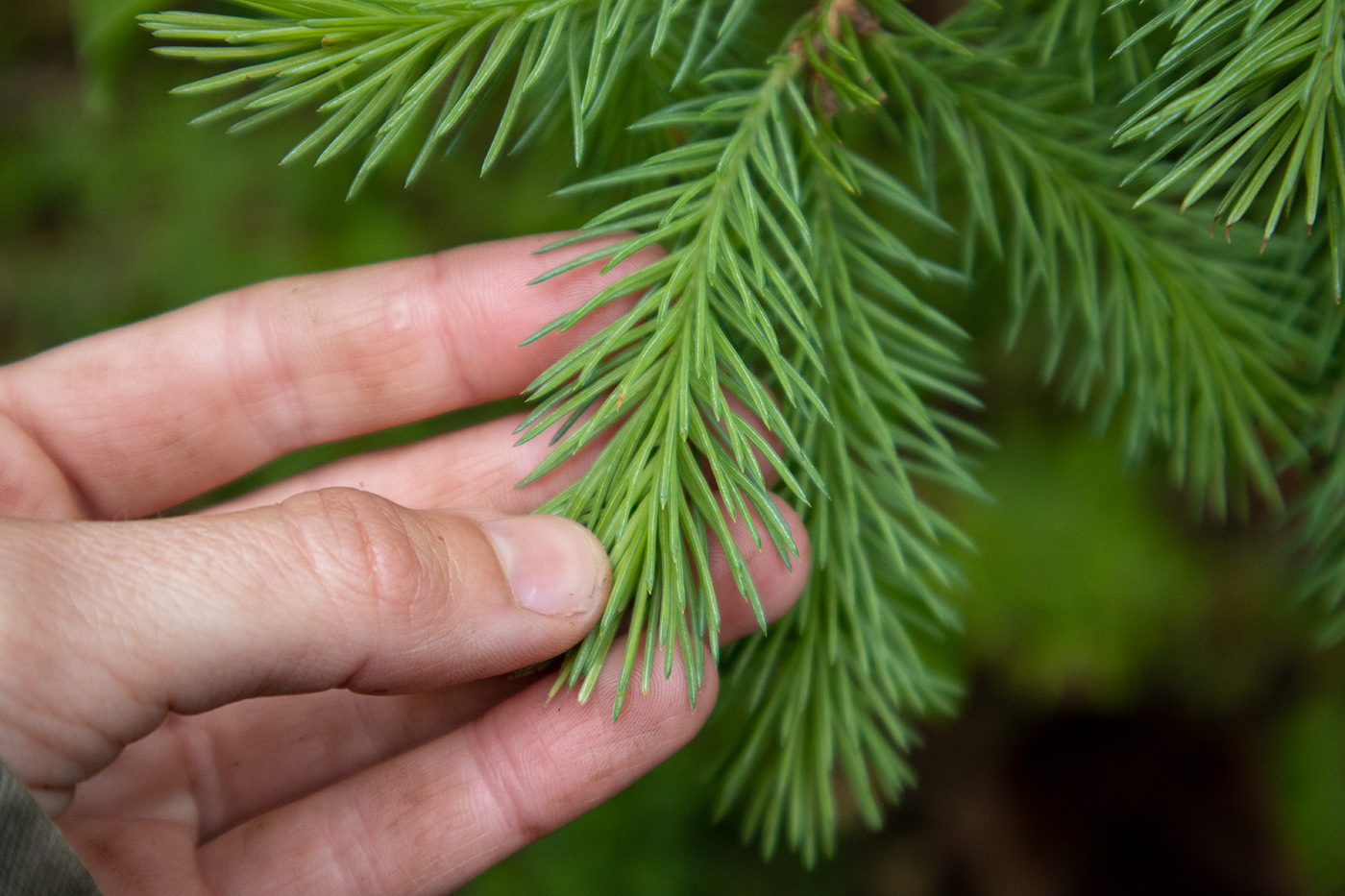
While it’s possible to talk broadly about the Wabanaki-Acadian forest, the forest makeup changes depending on “topography, geology, and proximity to the ocean.”2 For example, acidic soils near bogs give rise to black spruce, tamarack, and black ash. While, sugar maple, yellow birch, and red oak prefer fertile soils that are moist, but moderately drained.
The forest goes by many names: Wabanaki, Acadian, or New England. Wabanaki honours the Mi’kmaw and Wolastoqiyik peoples, on whose unceded territory the forest lies.3 In Canada, it’s also called the Acadian forest after French Acadian settlers. In the US, it’s known as the New England forest.
Colonization Leads to Changes in the Wabanaki-Acadian Forest
The original inhabitants of the region are the Mi’kmaq, Wolastoqiyik, and Passamaquoddy. They lived in the area for thousands of years and relied on the forest and its wildlife for food, shelter, clothing, and medicine. They constructed birchbark canoes for transportation, tapped maple trees for syrup, made snowshoes from tamarack trees, and harvested a variety of plants for food and medicine.
The Wabanaki-Acadian forest changed drastically with colonization. Prior to European settlement, old-growth forests blanketed roughly half the land,1 dominated by pine, hemlock, cedar, spruce, fir, and several hardwood species.2 These trees could live up to 300 years and formed a towering, unbroken canopy that stretched across the maritime provinces and the northeastern United States.1

When settlers found the unbroken forests, they saw economic opportunity: “White pine and, later, red spruce and other species were harvested for European shipbuilding and lumber markets and for local construction and fuel. Hemlock bark provided tannins for the fur trade and leather industry, while the wood became timbers for railway ties.”1
Forests were also cleared for fields and pastures after settlers realized that the “most productive soils were found under the best strands of trees.”1 Clearing the land was seen as a way of taming it and creating livable spaces that resembled settlers’ homelands.11 These changes led to “reduced biodiversity, diminished ecosystem function and had negative cultural impacts for Indigenous people.”8
A Young and Even Aged Forest
Today, the Wabanaki-Acadian forest contains only 1 percent old growth. The average age of its trees is around 55 years, whereas before settlement, they were estimated to be over 200 years old.5 So much of the forest has been destroyed that the World Wildlife Fund lists it as endangered.2 What remains is a young, even-aged forest that is less resilient to natural disasters (fires and windstorms) and invasive insects. It also provides less habitat for wildlife than a multi-generational forest would.6
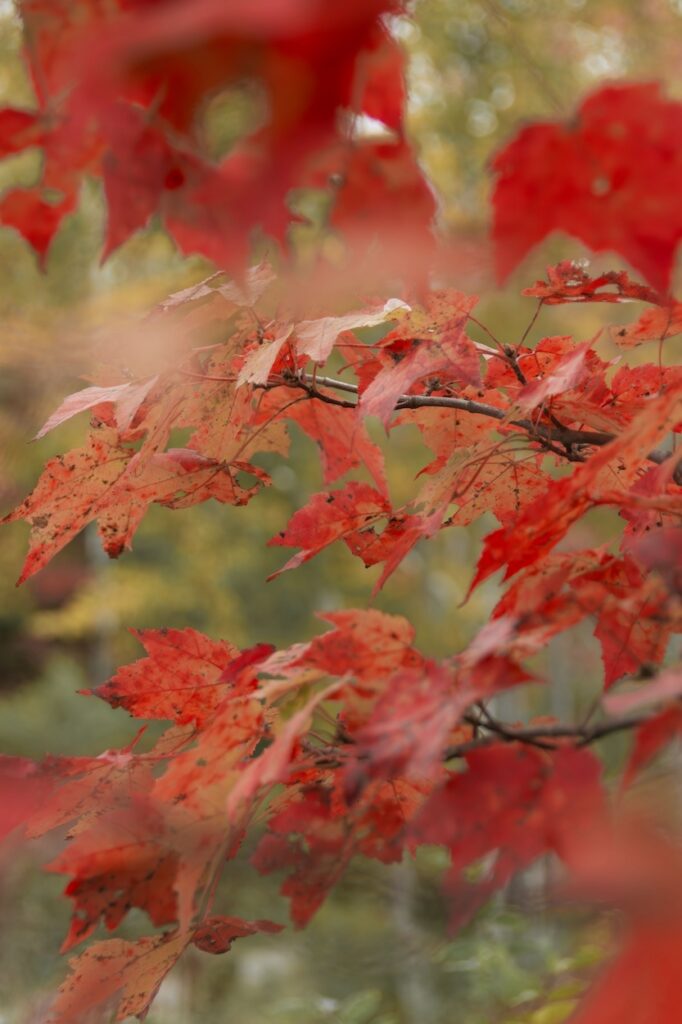
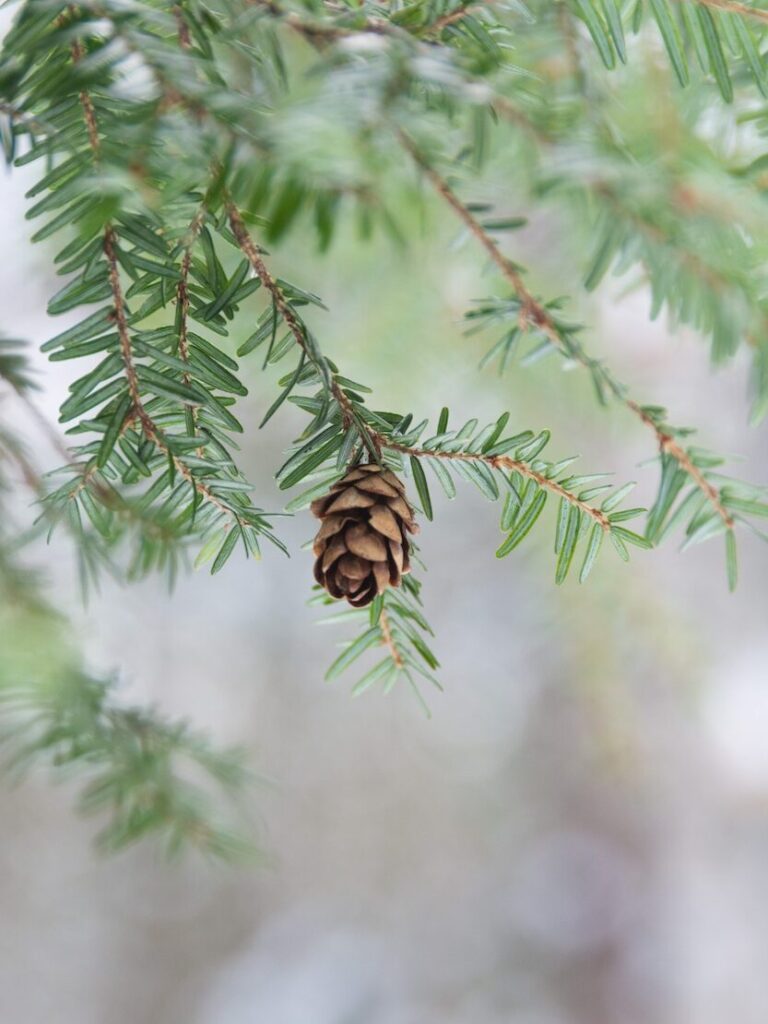
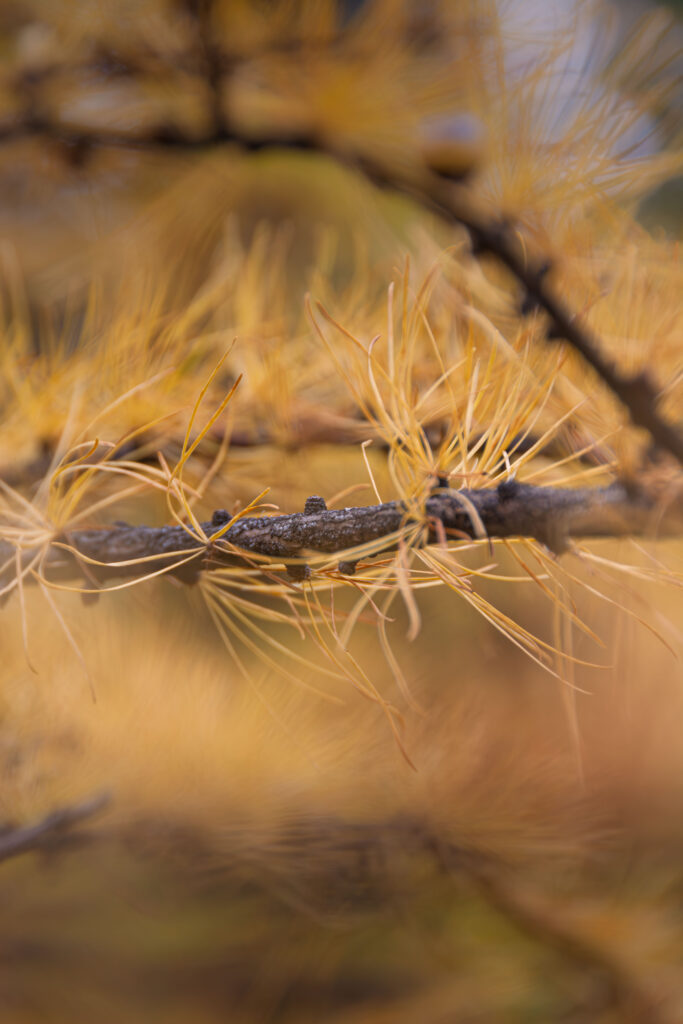
If you visit, you’ll find lots of “balsam fir, red maple, white spruce, white birch, and trembling aspen.”1 Balsam fir and spruces “now comprise about 50% of the forest but 200 years ago, they accounted for only 25%.”2 At the same time, cedar, red spruce, hemlock, and sugar maples have decreased in frequency.2
We also see an increase in the abundance of “tree species common in the boreal forest,” including poplar, white birch, black spruce, balsam fir, and jack pine.1 Scientists are calling this the ‘borealization’ of the Wabanaki-Acadian forest and it further reduces its ecological resilience.1

Plants of the Wabanaki-Acadian Forest
While the forest has lost a lot of its former abundance, it’s still full of beauty and diversity. There are too many incredible plants to discuss them all here, but here are some I’ve come to love:
Red maple (Acer rubrum): In autumn, the leaves of red maples turn a vibrant shade of red. They’re one of the most spectacular trees in the fall canopy. Deer and rabbit eat their shoots and leaves, while squirrels eat their samaras (winged seeds).
Jack Pine (Pinus banksiana): Jack pines have serotinous cones. They stay tightly sealed with resin until they’re exposed to fire. Fires also clear the forest of competing vegetation, giving this slow-growing tree room to grow.
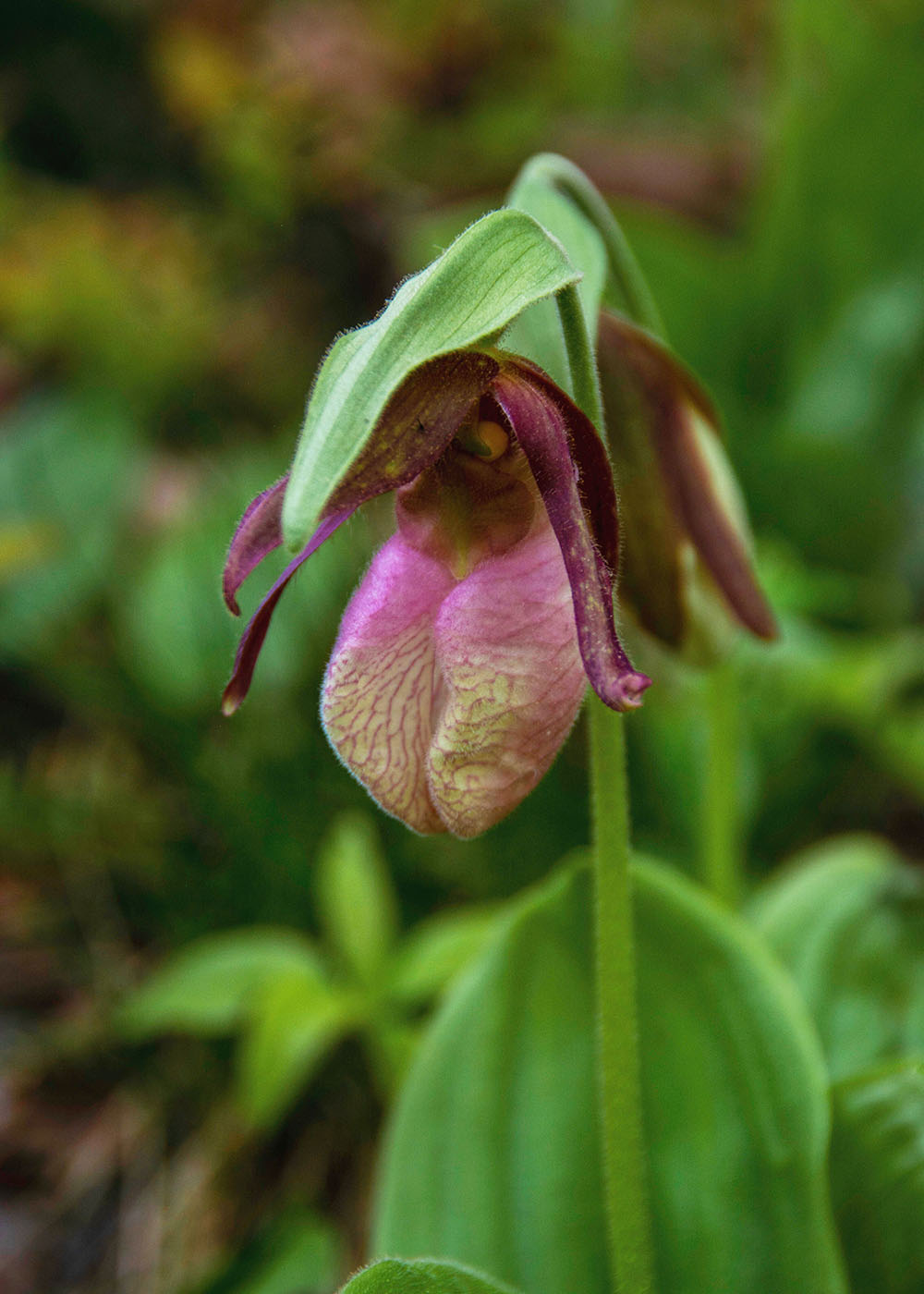
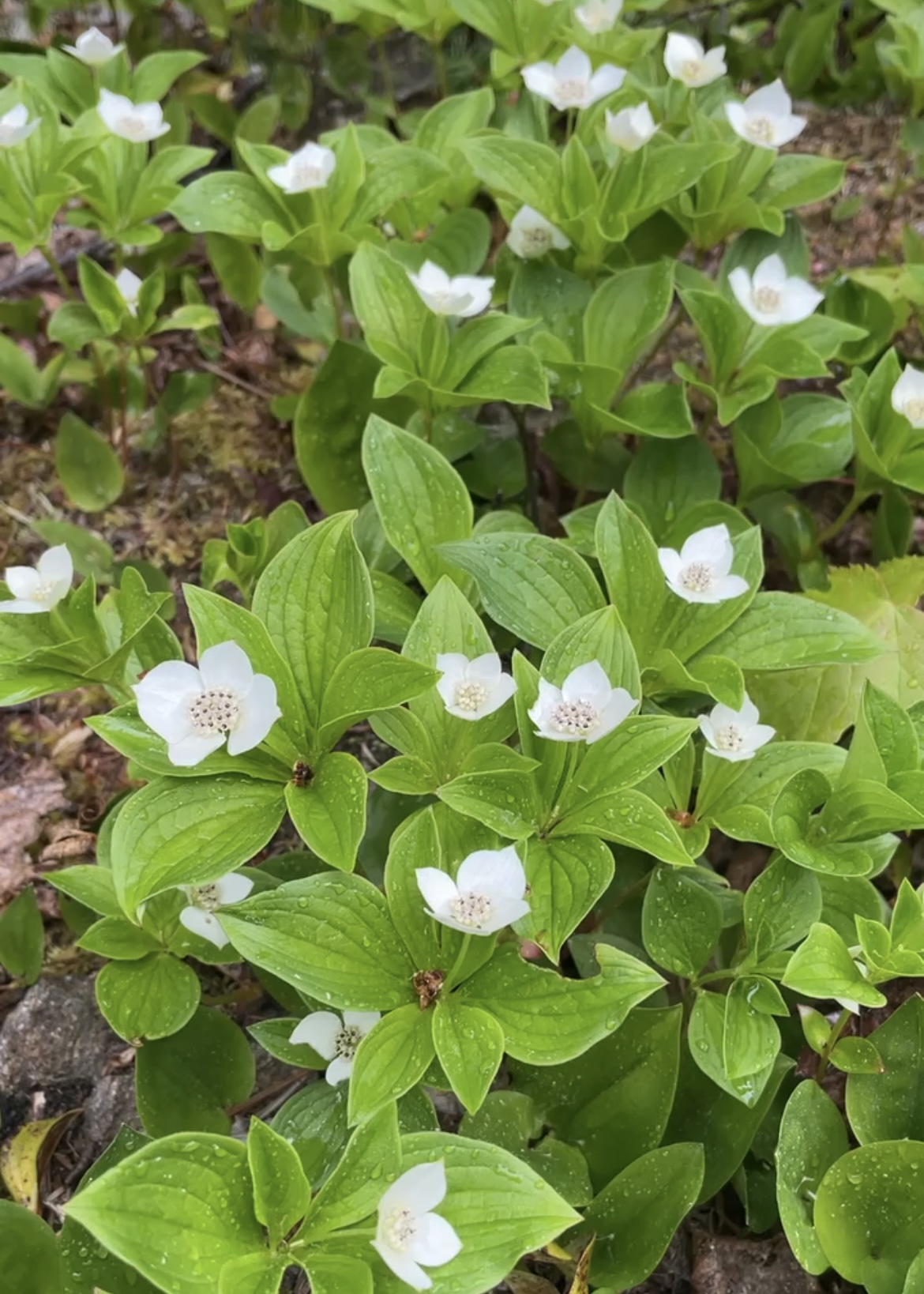
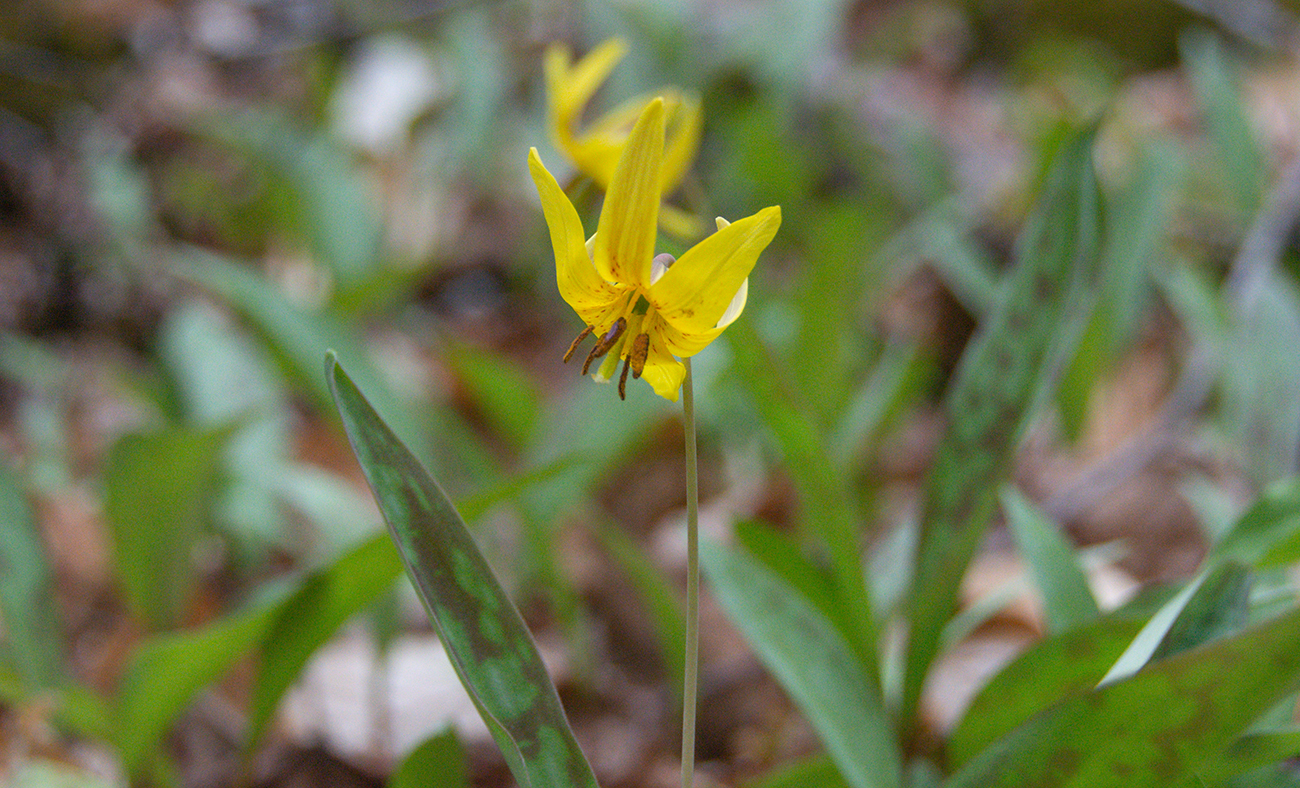
Lowbush blueberry (Vaccinium augustifolium): There’s nothing quite like stumbling on a patch of wild blueberries – they’re so sweet! Blueberries also have a fascinating relationship with fire. Their underground rhizomes can withstand extreme heat. Some blueberry growers use controlled burns in their fields to eliminate competing plants and enrich the soil, promoting healthier and stronger blueberry plants.
Trilliums (Trillium spp.): Eastern Canada is known for its trilliums! They’re one of the first wildflowers to bloom in spring, often in forests with beech and maple trees. The Wabanaki-Acadian forest is home to five species of trillium: red, painted, white, drooping, and nodding trillium.
Dutchman’s Breeches (Dicentra cucullaria): Dutchman’s breeches gets its name from its delicate white flowers that look like the trousers Dutchmen wore centuries ago. You can spot these charming flowers in hardwood and mixed wood forests in early spring.
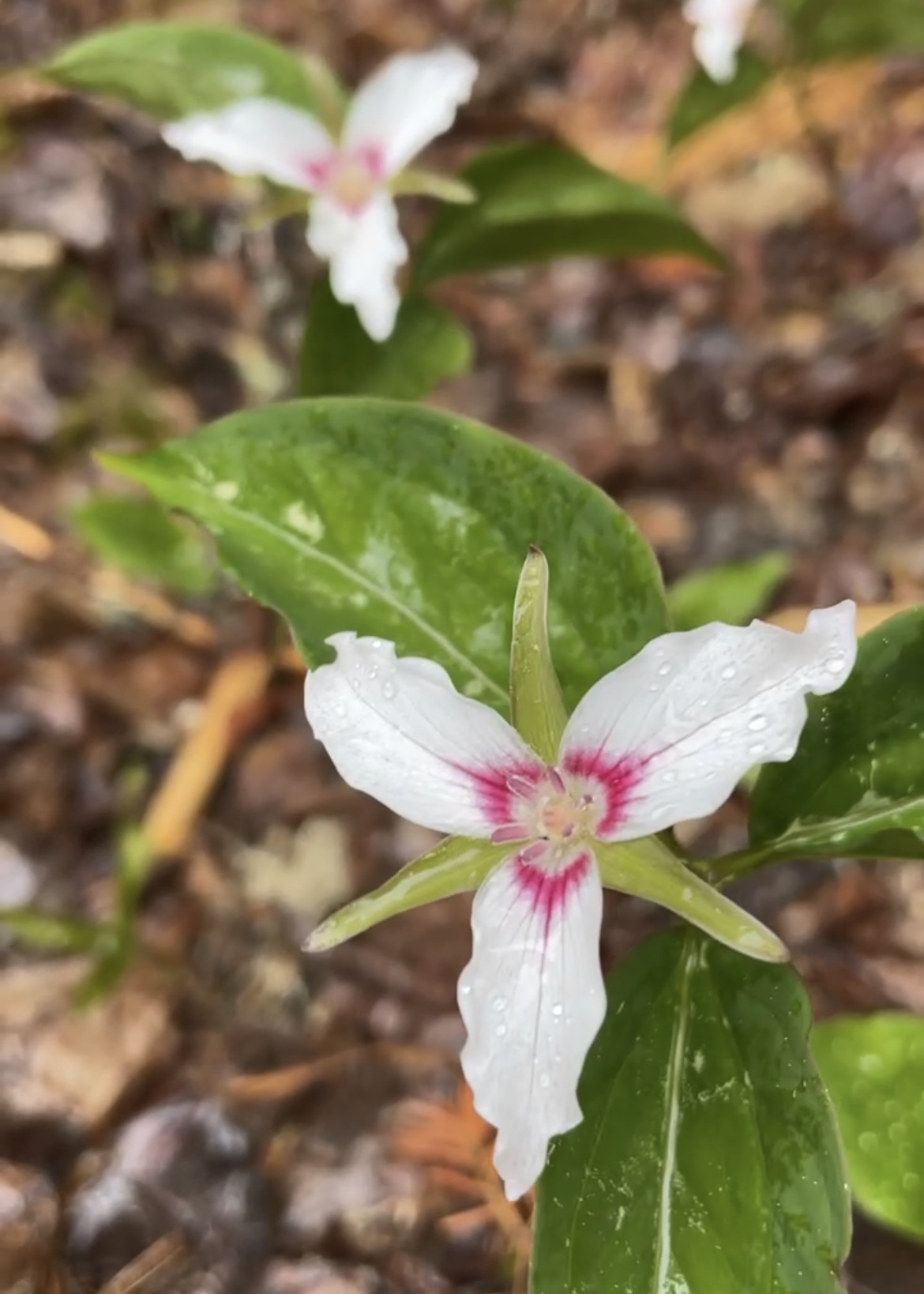
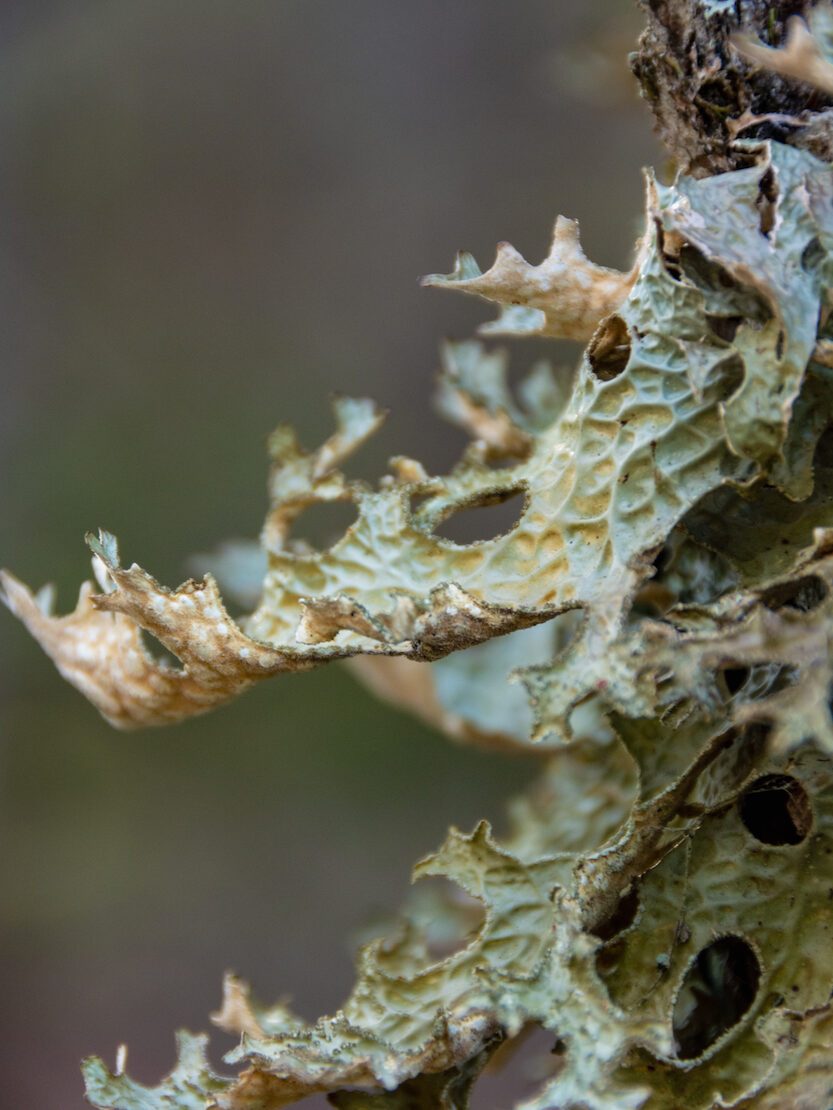
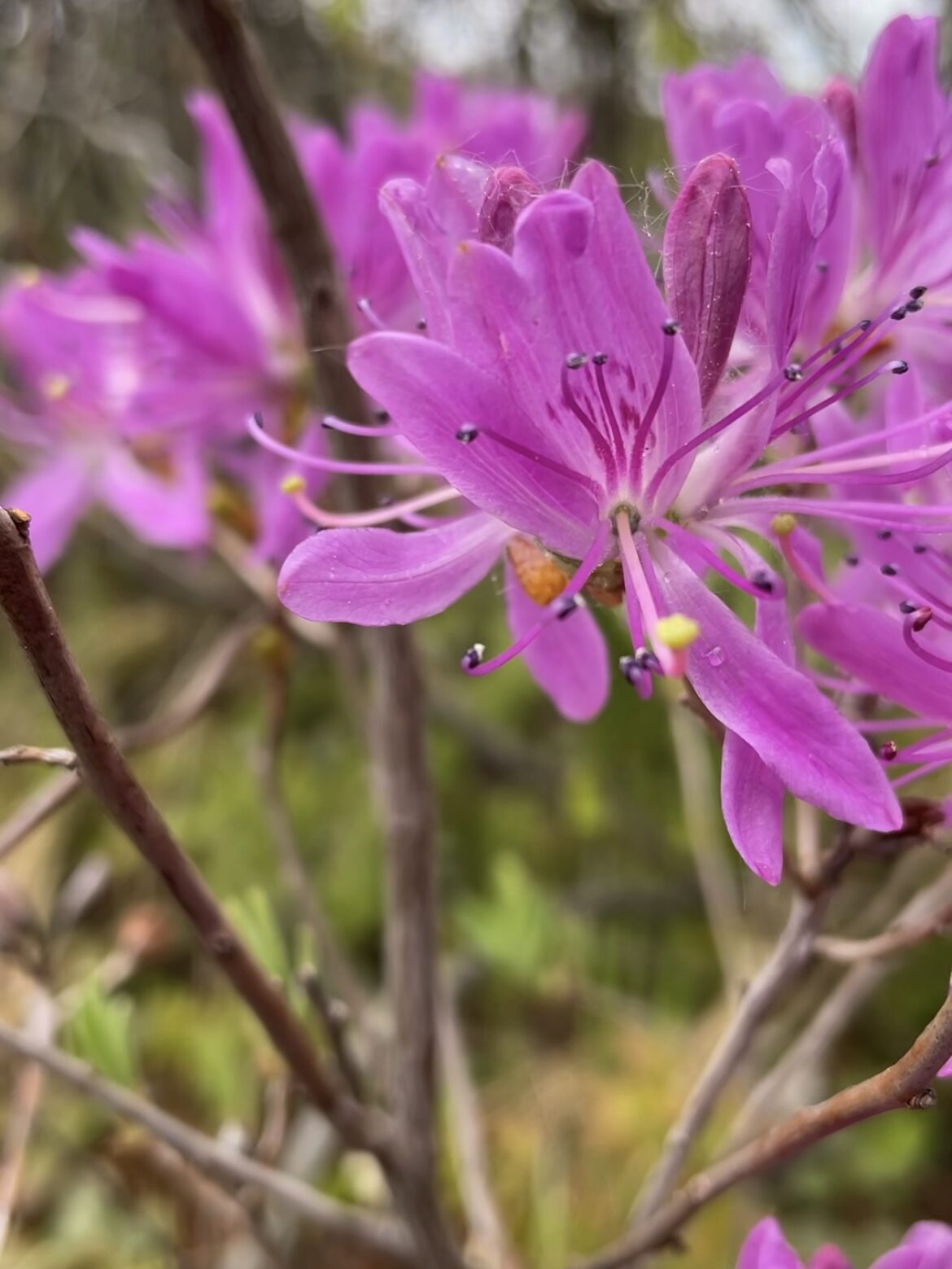
Trout Lily (Erythronium americanum): Trout lilies grow in large colonies that blanket the forest floor. Their leaves are green and brown and look like the skin of brown or brook trout. Tread carefully, it takes seven years for a trout lily to make a flower!
Tree Lungwort (Lobaria pulmonaria): Not a plant, but a lichen, tree lungwort can be found growing on the sides of trees. It’s large, leafy, and bright green with a pale cream/orange underside. In hot and dry conditions, it turns a grey or dull brown. Tree lungwort is an important nitrogen fixer. Where it grows, there is a constant drip of nitrogen down from the forest canopy.
Jewelweed (Impatiens capensis): This beautiful bright orange flower blooms in mid-summer. I first learned of it on the M’pisun Awti”j, the MacLaren Pond Medicine Trail in Fundy National Park. The crushed leaves of jewelweed are used by the Mi’maq to soothe insect bites, burns, and poison ivy rashes. The plant grows in partial shade near floodplains.
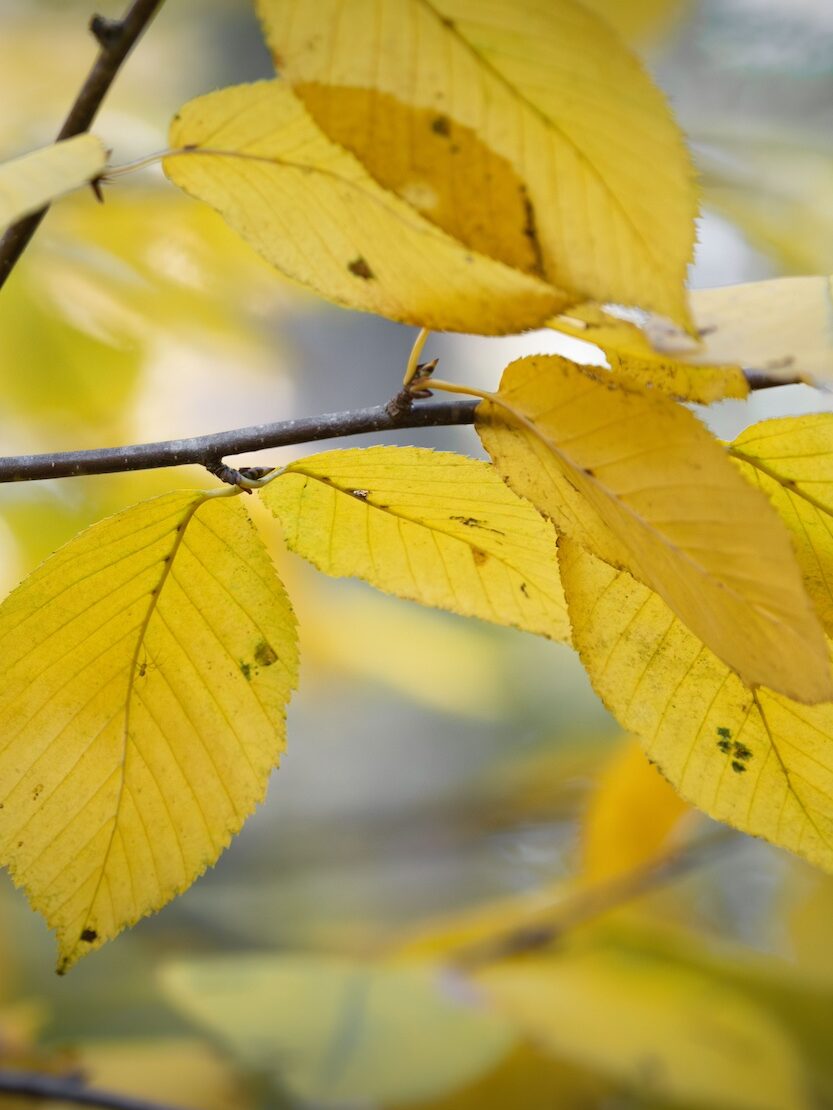
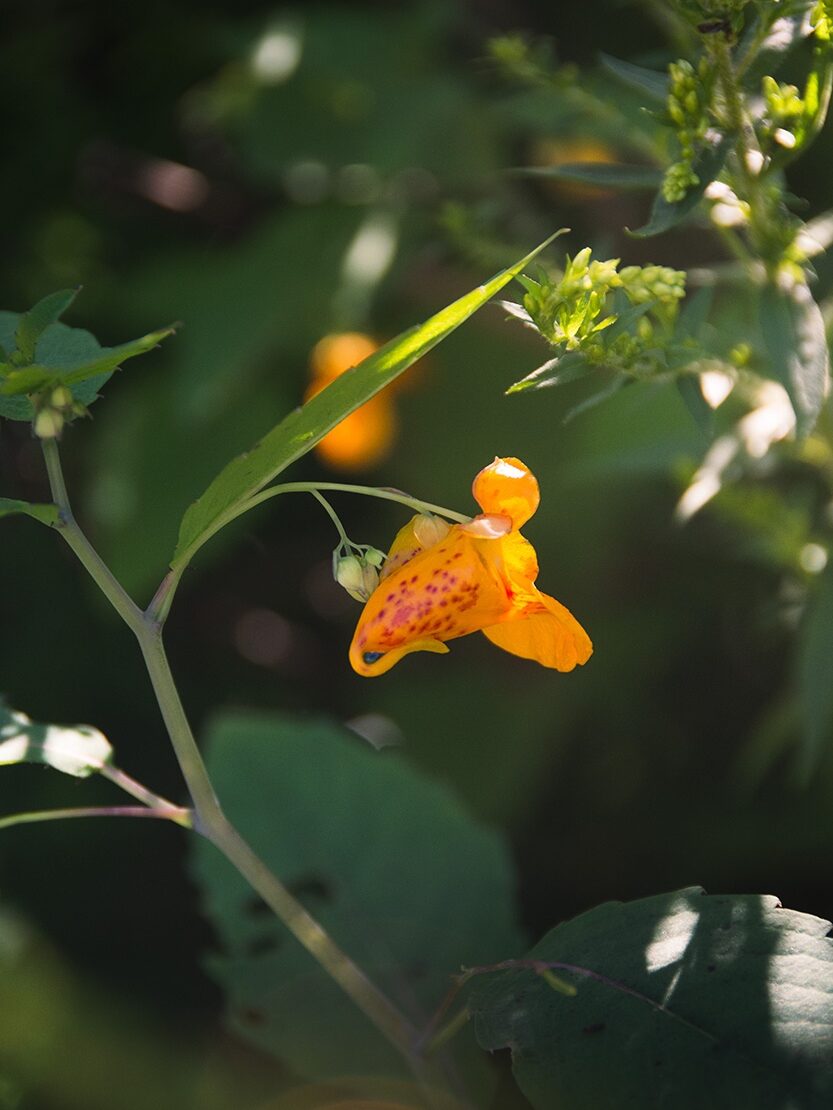
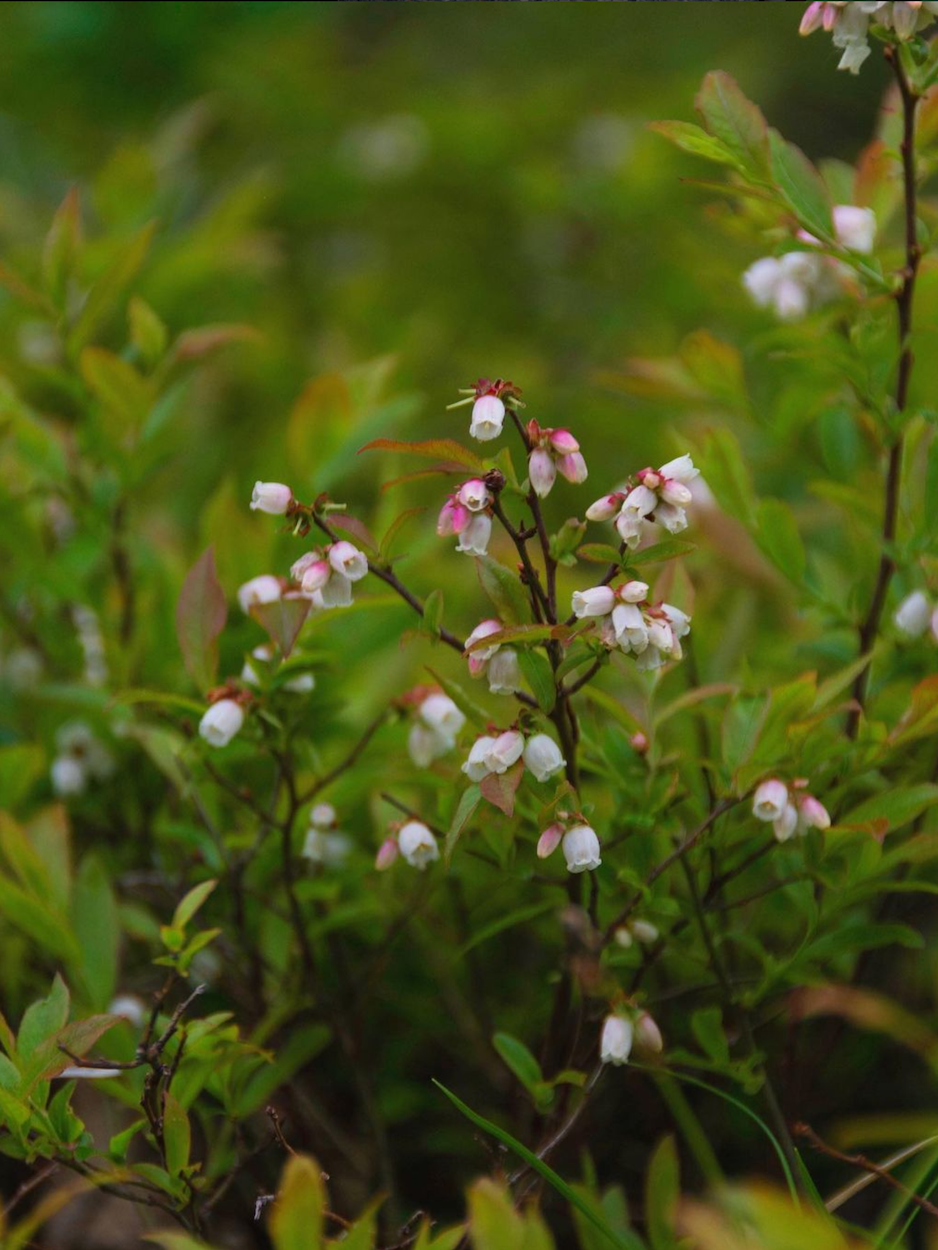
Do you have a favourite plant from the region? Let me know in the comments. If you want to learn more about plants in the area, I’ve written a post identifying conifers in the Wabanaki-Acadian forest. The Nova Scotia government also has a guide to hardwoods and softwoods. The Macphail Woods Ecological Forestry Project has a guide to native wildflowers. Below is a non-exhaustive list of plants common to the area:

Wildlife in the Wabanaki-Acadian Forest
Colonialism also changed the composition of wildlife in the Wabanaki-Acadian forest. While Indigenous peoples lived alongside animal predators for centuries, settlers destroyed the wolf, wolverine, and cougar through over hunting and habitat destruction. Moose and caribou were also heavily hunted and by 1801 were almost entirely destroyed.2 Today, moose populations have recovered in some regions, but they are absent from Prince Edward Island, and the mainland moose in Nova Scotia is endangered.
Land clearing by settlers also created ideal habitats for deer and coyote, leading to a rapid increase in their numbers.2 While animals that live in old or mature forests, like the pine marten and fisher, are decreasing in number.2

Despite these changes, the Wabanaki-Acadian forest still houses a wide variety of wildlife. Here are some interesting inhabitants:
Eastern moose (Alces alces americana): Eastern moose are huge! They’re around 7 feet tall and can weigh 1100 pounds or more! 9 They’re herbivores, mainly consuming leaves, twigs, and bark from deciduous trees and shrubs. They are especially fond of aquatic vegetation and are often found near lakes, rivers, and marshes.
Black bear (Ursus americanus): Black bears are the biggest predators in the region. Many fear them, but they’re generally shy and try to avoid humans. Most confrontations between humans and bears are caused by humans improperly handling food on trails and at campsites. Carry bear spray and dispose of food properly and bears shouldn’t be a problem. They’re really quite intelligent, with a great memory, and keen sense of smell.
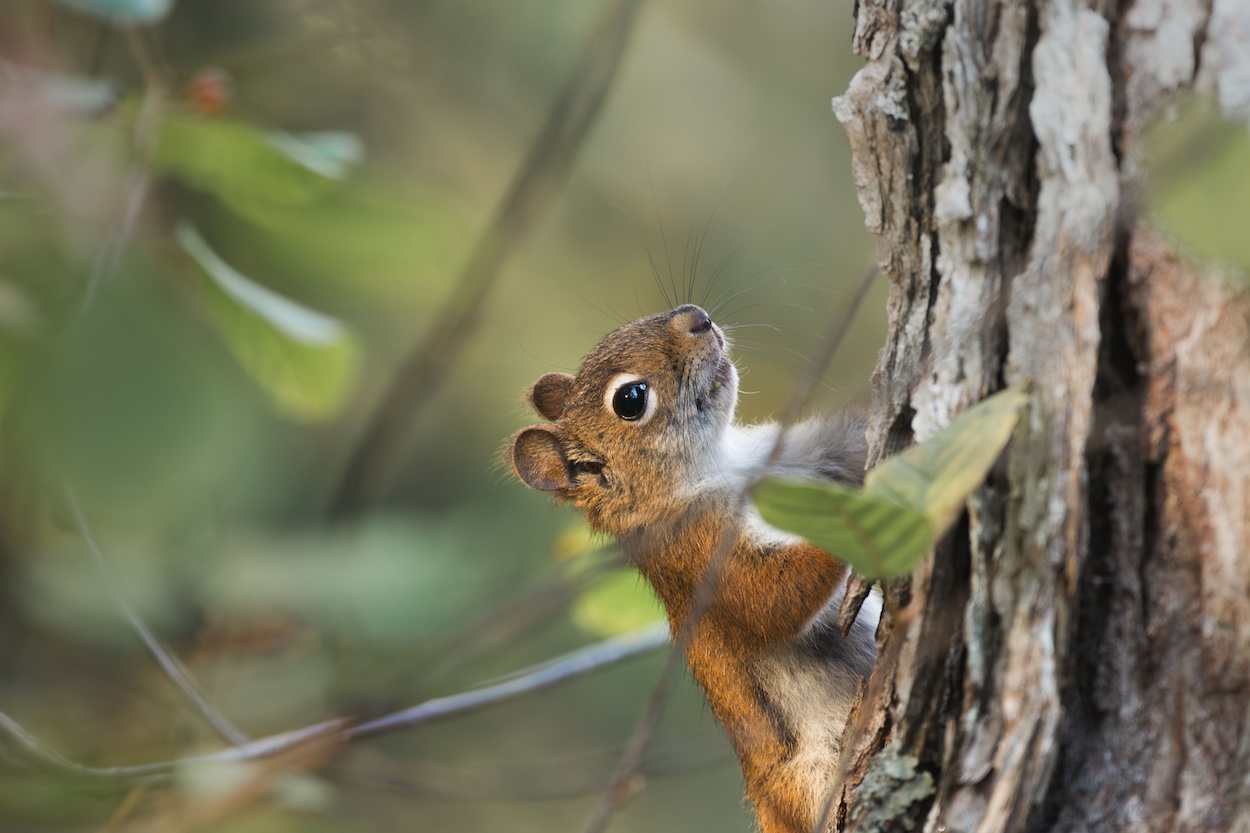


Snowshoe hare (Lepus americanus): Snowshoe hare get their name for their large hind feet, which act like snowshoes, allowing them to move easily over deep snow. Their fur changes colour with the seasons to keep them hidden from predators. In winter, it’s white to blend in with the snow. In summer, it turns brown to match the forest floor.
White-tailed deer (Odocoileus virginianus): White-tailed deer are virtually everywhere in the Wabanaki-Acadian forest region. One way they communicate is through their tails. A casual wag signals relaxation.10 Quick and jerky movements indicate worry, while a raised tail warns the herd of danger.10
Black-capped chickadee (Poecile atricapillus): Black-capped chickadees are also very common in the region and throughout much of Canada. They’re so lively and friendly, that you can often feed them by hand! Chickadees cache their food, hiding thousands of seeds per day in bark crevices and under lichen. They have an impressive memory for recalling most of these hiding spots!12
Blue jay (Cyanocitta cristata): Blue jays are easily recognized by their bright blue feathers, unique crest, and loud calls. Blue jays can mimic the sounds of predatory birds to scare competitors away from food sources. They do a great imitation of red-shouldered and red-tailed hawks.
Impacts of Climate Change
Some scientists predict that climate change will further impact the composition and growth of the Wabanaki-Acadian forest by 2100.1 Boreal species that are common to the region are expected to decline and be replaced with temperate species.7 One study argues that this provides an “opportunity for rebalancing historic tree species distributions.”13 Unfortunately, others point out, temperate species are unlikely to “keep pace with the loss of cold-adapted boreal species” leading to “a temporary decrease in forest growth.”7
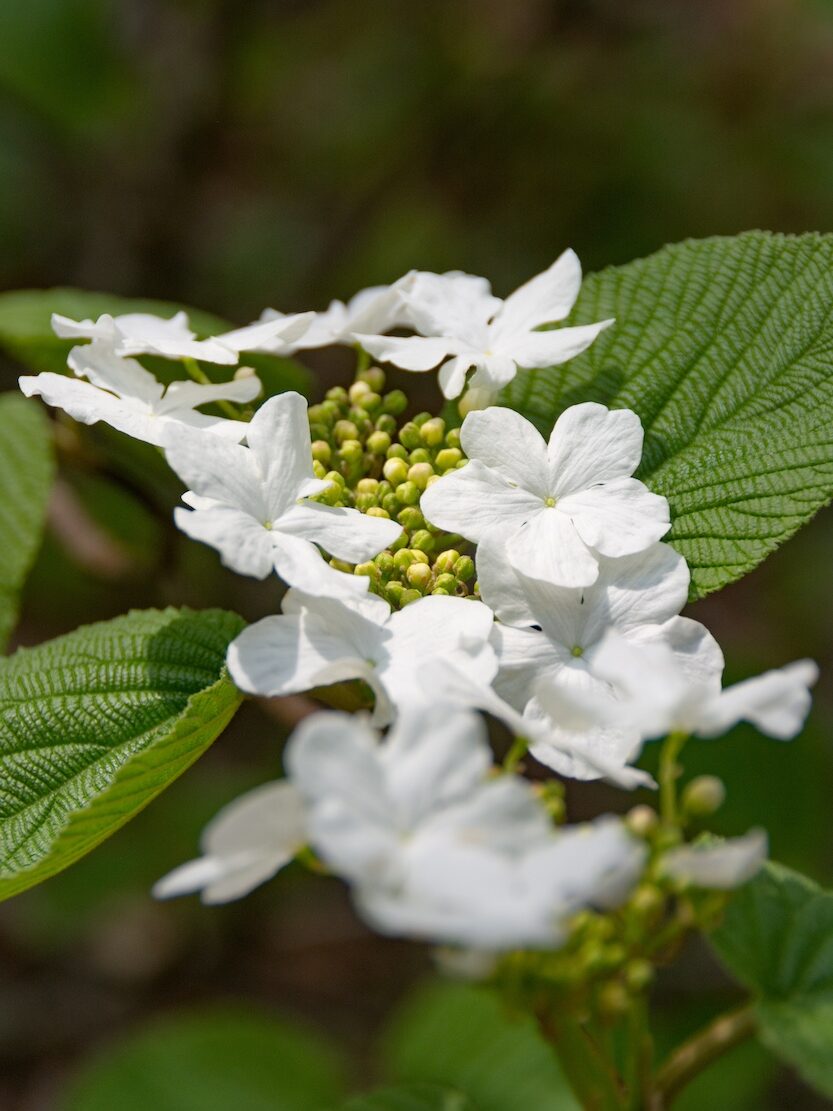
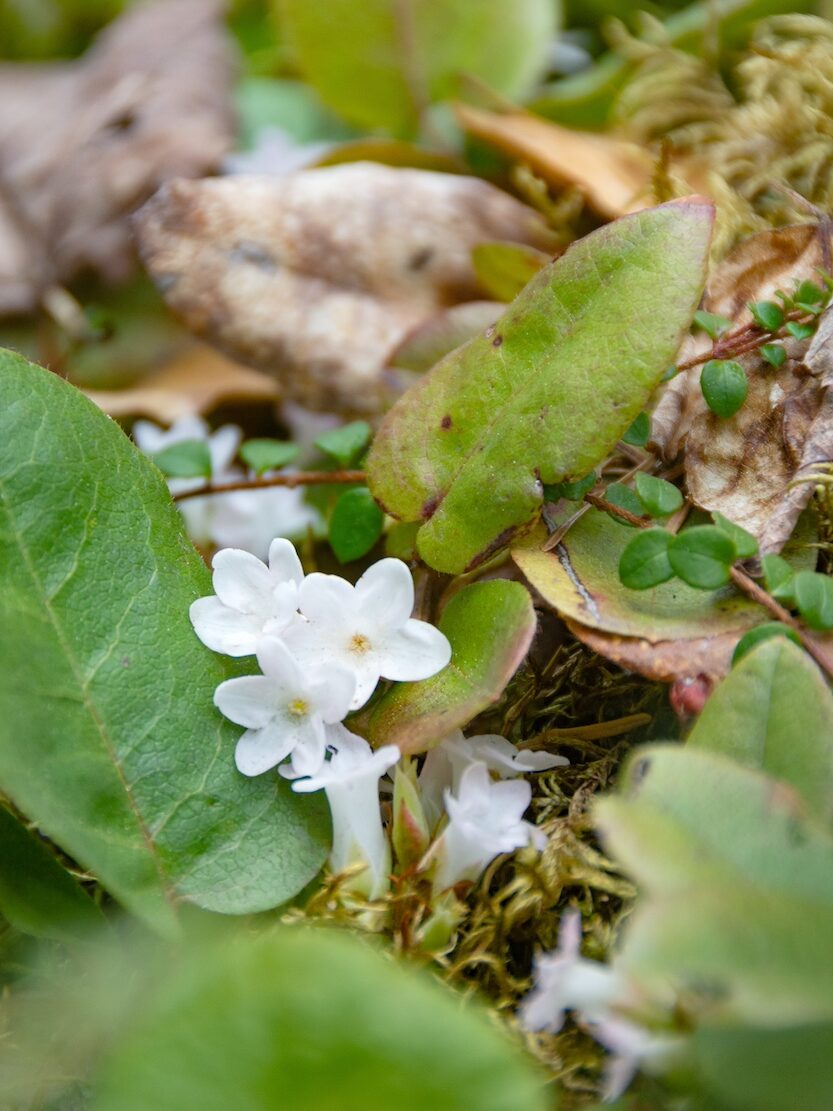
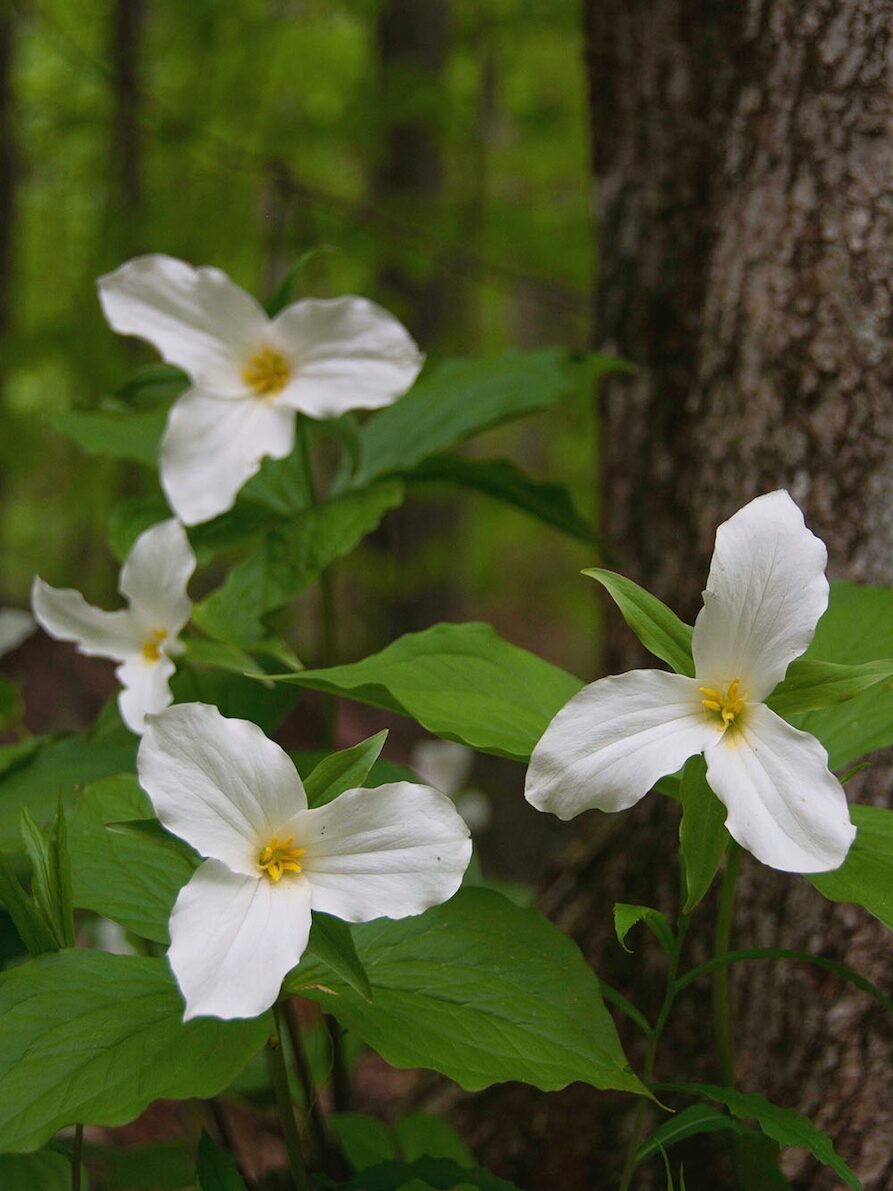
Warmer temperatures may also lead to increased pest and disease pressure on trees. Pests and diseases that were once limited by cold temperatures may become more prevalent, leading to increased tree mortality. This is the case for the hemlock woolly adelgid and spruce budworm which are devastating hemlocks, spruces, and balsam fir. Tick-borne illnesses are also spreading more rapidly affecting wildlife and humans.
Another unfortunate consequence of climate change is it could alter the frequency and intensity of wildfires in the Wabanaki-Acadian forest. Last year, Nova Scotia saw unprecedented wildfires that spread rapidly due to warmer and drier conditions. If this trend continues, it could have a significant impact on forest composition and ecosystem health.
You might also like
Identifying Conifers of the Wabanaki/Acadian Forest
Tree Lungwort (Lobaria pulmonaria)
Eastern Canada’s Edible Trees and Their Medicinal Qualities
Balsam Fir: Plant Facts and Uses
Maple Trees and their Edible Qualities
Sources
1 Jamie Simpson. 2008. Restoring the Acadian Forest: A Guide to Forest Stewardship for Woodlot Owners in Eastern Canada. Nimbus Publishing Limited.
2 J. Loo and N. Ives. 2003. “The Acadian Forest: Historical condition and human impacts.” The Forestry Chronicle.
3 The Nashwaak Watershed Association. “What is the Wabanaki Forest?“
4 David Weale. 1983. “The Gloomy Forest.” The Island Magazine.
5 A. Mosseler, J.A. Lynds, and J.E. Major. 2003. “Old-growth forests in the Acadian Forest Region.” Environmental Reviews.
6 World Wildlife Fund. “New England-Acadian Forest.” Prepared by: M. Davis, L. Gratton, J. Adams, J. Goltz, C. Stewart, S. Buttrick, N. Zinger, K. Kavanagh, M. Sims, G. Mann.
7 A.R. Taylor, Y. Boulangerb, DT. Pricec, D. Cyrb, E. McGarrigled, W. Rammere, J.A. Kershaw. 2017. “Rapid 21st century climate change projected to shift composition and growth of Canada’s Acadian Forest Region.” Forest Ecology and Management.
8 Government of Canada. 2022. “Our Future Forests.”
9 Main Department of Inland Fisheries and Wildlife. “Moose: Alces alces americana.”
10 Tom Carpenter. 2016. “8 Messages Deer Send With Their Tail.” Deer and Deer Hunting.
11 David Weale. 1983. “The Gloomy Forest.” The Island.
12 Marissa Applegate and Dmitriy Aronov. 2022. “Flexible Use of Memory by Food-Caching Birds.”
13 Joshua Noseworthy and Thomas Beckley. 2020. “Borealization of the New England-Acadian Forest: A Review of the Evidence.” Canadian Science Publishing.
One comment on “Wabanaki-Acadian Forest: History, Species, and Biodiversity”